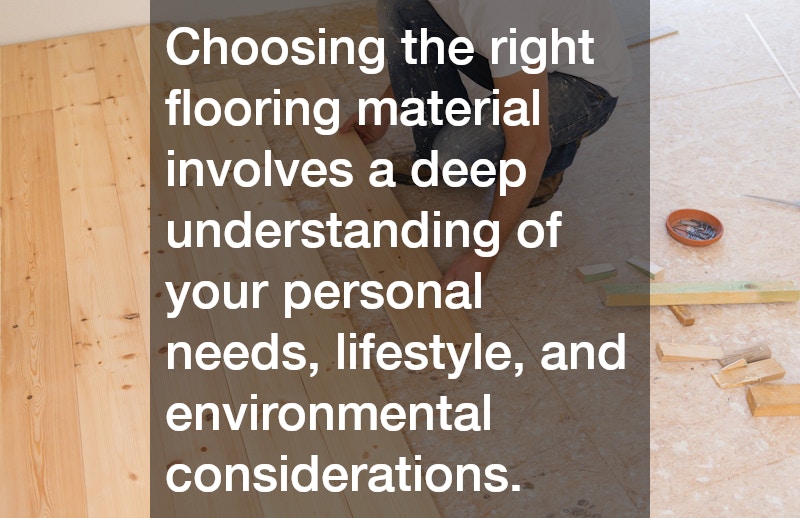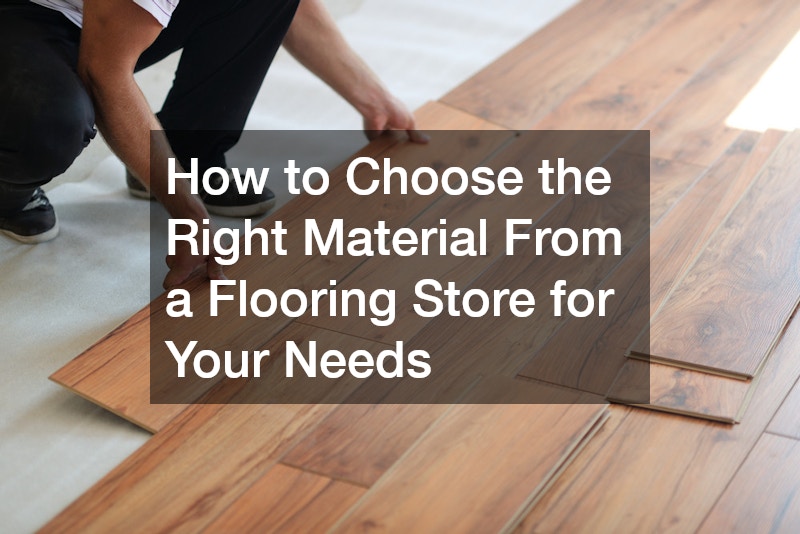When it comes to home remodeling or decorating, choosing the correct flooring store material is a crucial decision that can heavily influence both the functionality and aesthetic of your space. With numerous options available at flooring stores, knowing what material suits your specific needs can be overwhelming. This article will guide you through common questions and considerations to help you make an informed choice.
What Are the Best Flooring Materials for Different Rooms?
Kitchen and Dining Areas
The kitchen and dining areas often require flooring that can withstand spills, high traffic, and food stains. Consider materials like tile, vinyl, or laminate for these spaces, as they offer durability and ease of cleaning.
Tile is a popular choice because it’s water-resistant and comes in a wide variety of designs to match any décor. Laminate flooring also offers a resilient surface, often replicating the appearance of wood or stone at a lower cost.
A vinyl flooring store provides an affordable alternative that can mimic the look of more expensive materials. Such flooring store requirements should focus on practicality, ensuring that the material can handle everyday kitchen activities.
Bedrooms and Living Rooms
For areas where comfort and warmth are paramount, such as bedrooms and living rooms, carpeting or hardwood might be the ideal choice. Carpeting adds a soft, cozy feel that’s perfect for these intimate spaces.
In contrast, hardwood offers a timeless elegance and improved air quality, as it doesn’t trap dust like carpet can. It also retains value well and can be a good long-term investment for your home.
Engineered hardwood can be a more budget-friendly, yet stylish option that provides the look of authentic wood with enhanced moisture resistance. When selecting flooring for these spaces, the focus should be on comfort and aesthetics.
How Do Flooring Materials Affect Indoor Allergies and Air Quality?
Hypoallergenic Flooring Options
Some materials, like cork and bamboo, are known for being hypoallergenic. They don’t trap dust and allergens, making them a great choice for allergy sufferers.
Additionally, synthetic options such as laminate also offer hypoallergenic properties, allowing for easy cleaning and maintenance. These materials help to maintain a healthier indoor environment by reducing allergens.
When selecting flooring with allergies in mind, prioritize materials that resist dust accumulation and promote clean air. This decision can enable a significant improvement in the home’s air quality and the inhabitants’ well-being.
VOC Emissions and Air Quality
Volatile organic compounds (VOCs) can affect indoor air quality. Knowing which materials emit low VOCs, like natural stone or high-quality linoleum, can be crucial for health considerations.
Low-VOC flooring materials are generally better for both the environment and human health. Choosing such materials can significantly reduce the presence of harmful chemicals in your home.
Cork flooring offers a low-VOC alternative that promotes a sustainable environment and improves indoor air quality. When selecting flooring, always check for certifications that guarantee low emissions to ensure your health is protected.
What Is the Cost Comparison Among Different Flooring Materials?
Initial Purchase and Installation Costs
The upfront cost of flooring store materials varies. For instance, luxury vinyl tile (LVT) may be less expensive than hardwood but doesn’t compromise on aesthetics.
Installation costs can also vary significantly depending on the complexity and type of flooring chosen. When budgeting for your flooring project, it is important to consider both material and labor costs.
Long-term Maintenance and Durability Costs
Consider the long-term costs associated with materials. For example, while solid hardwood may have a higher initial cost, its longevity can make it more economical over time.
Materials like hardwood can be refinished multiple times, retaining their appearance and structural integrity over the years. This potential for renewal makes them ideal for longevity-focused investments.
Are There Eco-Friendly Flooring Options?
Sustainable Materials
Flooring options like bamboo, cork, and reclaimed wood are popular for environmentally conscious consumers due to their sustainability and renewability. Bamboo, for instance, grows quickly and can be harvested without depleting natural resources.
Cork is harvested from the bark of cork oak trees, which regenerates over time, making it a renewable choice. Reclaimed wood gives a new life to older materials, reducing waste and preserving forests.
Recyclable and Renewable Resources
Some flooring options are made from recycled materials or are recyclable themselves, offering a green solution for eco-friendly home renovations. Materials like glass tiles or rubber flooring from recycled tires can significantly reduce environmental impact.
Linoleum, made from natural materials like linseed oil and cork dust, is also biodegradable and suitable for eco-friendly practices. Choosing recyclable flooring options not only supports sustainability but also contributes to reducing waste in landfills.
Choosing the right flooring material involves a deep understanding of your personal needs, lifestyle, and environmental considerations. By evaluating the purpose of the space, health factors, budget constraints, and environmental impact, you can select a flooring option that not only enhances your home’s value and aesthetics but also aligns with your values. With this information in hand, visiting the flooring store will become a more targeted and satisfying endeavor.




